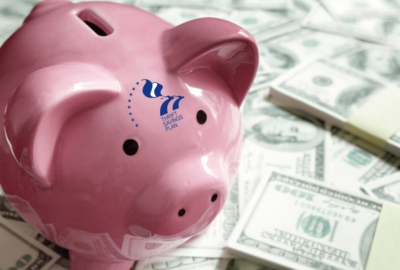
TSP: Roller coaster or merry-go-round? Titanic or Love Boat?
The current world economic situation triggered by the coronavirus pandemic reminds more people of the Great Depression than it does the Great Recession of...
The current world economic situation triggered by the coronavirus pandemic reminds more people of the Great Depression than it does the Great Recession of 2008-2009.
During the latter, tens of thousands of federal workers and retirees pulled money from their falling stock-indexed C, S and I funds and invested it in the safety of the treasury securities G fund. Many of those who did never returned to stocks even as they soared and became expensive during the record 11-year bull market. Many who deserted stocks for the G fund think they did the prudent thing. Many who stuck with the stock-indexed funds while they were down think they did the right thing, refusing to sell while shares were down and continuing to buy when they were, in effect, on sale.
So who’s right?
We asked Abraham Grungold, a long-time fed, successful investor and financial coach, why he’s sticking with the stock market which, he says, is a lot like riding a very steep roller coaster. Here’s how he puts it as a fed and financial coach:
TSP roller coaster 2020: The scariest ride of them all
During my 34 years of federal service, I have been on many different Thrift Savings Plan roller coasters. To clarify the TSP roller coaster is a ride for those TSP participants who are investing in the C, S and I funds. The rest of TSP participants who are in the G fund are riding a merry-go-round. No risk heading in a circle and enjoying the festive music.
Over the years, I survived many federal furloughs and they never seemed to have any long-term affect on the financial markets. In 2001, I survived the dot come boom roller coaster. It was a new jittery riding coaster but it did not last long and was overrated. The TSP soon came back strong after that financial ride. The financial crisis of 2008 was a very long TSP roller coaster ride. That ride seemed like it would never end. The ride lasted for years and there many twists and turns along the way. And once the ride ended, the TSP came back stronger than ever.
The TSP roller coaster 2020 is the biggest and scariest ride of them all. There is so much uncertainty and the biggest fear is in the very first drop of the ride. The first drop caused my TSP to depreciate 35% within a short few weeks. Depreciation means a decrease in value, not a loss. The financial crisis of 2008 caused my TSP account to decrease in value by 40% but that was a progressive drop over an extended period — 2008 to 2009. The TSP roller coaster 2020 has an immediate big drop that is not for the faint of heart. It is a violent and volatile ride. Each hill and valley of the ride provides 5% inclines and 10% drops in my TSP.
So, what are the tips of surviving the ride?
It is a simple approach that I have for each ride. I take a deep calming breath and hang on with both hands in the first drop. Many times, I close my eyes. And what that means is that I close my eyes to the financial news. Watching the financial news during a financial crisis only causes anxiety and panic. During all my rides I continue to put all my contributions into the C fund, and I don’t watch the financial markets. I focused on my federal career and enjoy my family life and hobbies. Already my TSP account has increased by 20% and I expect the ride to last a bit longer, but again, the market will be stronger than before.
So, what is my opinion of those participants who only invest in the G fund their entire careers and in retirement? My comment is simple: Some people prefer merry-go-rounds and some love the adrenaline of roller coasters. Risk takers such as me will ride the TSP roller coaster during their career and into retirement. Whichever ride you prefer, the most important thing is that you feel comfortable. It is your money, it is your decision.
Any questions or comments please contact me on LinkedIn or Facebook.
Nearly Useless Factoid
By Amelia Brust
Despite being mammals that require regular oxygen to breathe, dolphins sleep, or really nap, throughout the day. To sleep, a bottlenose dolphin will shut down only half of its brain, along with the opposite eye. The other half of the brain stays awake at a low level of alertness to watch for predators, obstacles and other animals. It also signals when to rise to the surface for air. After approximately two hours, it switches sides.
Source: Scientific American
Copyright © 2025 Federal News Network. All rights reserved. This website is not intended for users located within the European Economic Area.
Mike Causey is senior correspondent for Federal News Network and writes his daily Federal Report column on federal employees’ pay, benefits and retirement.
Follow @mcauseyWFED





